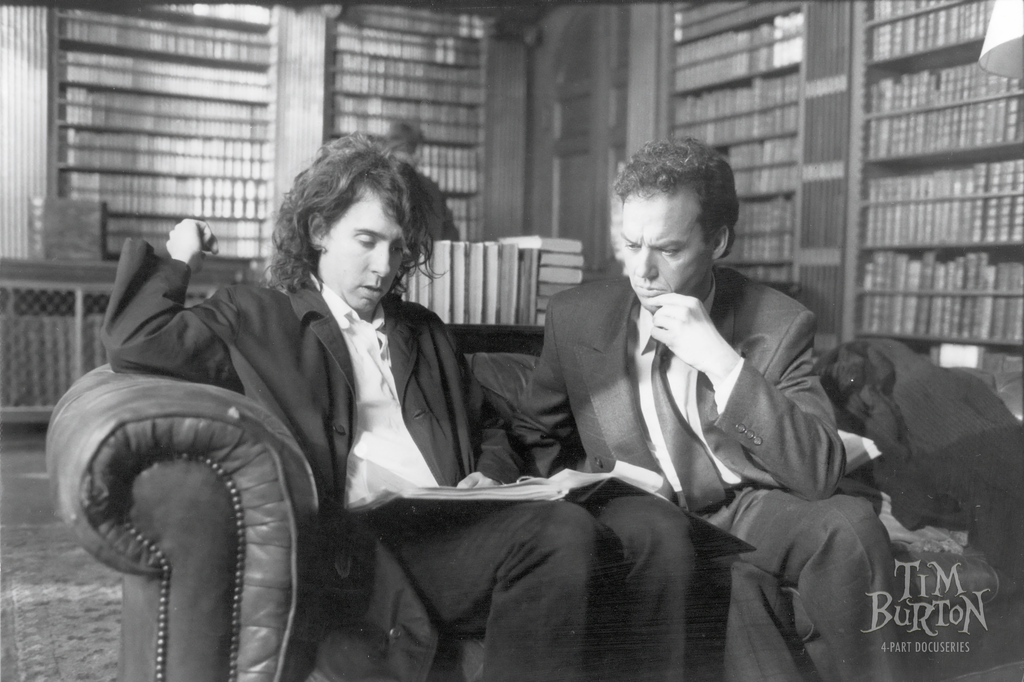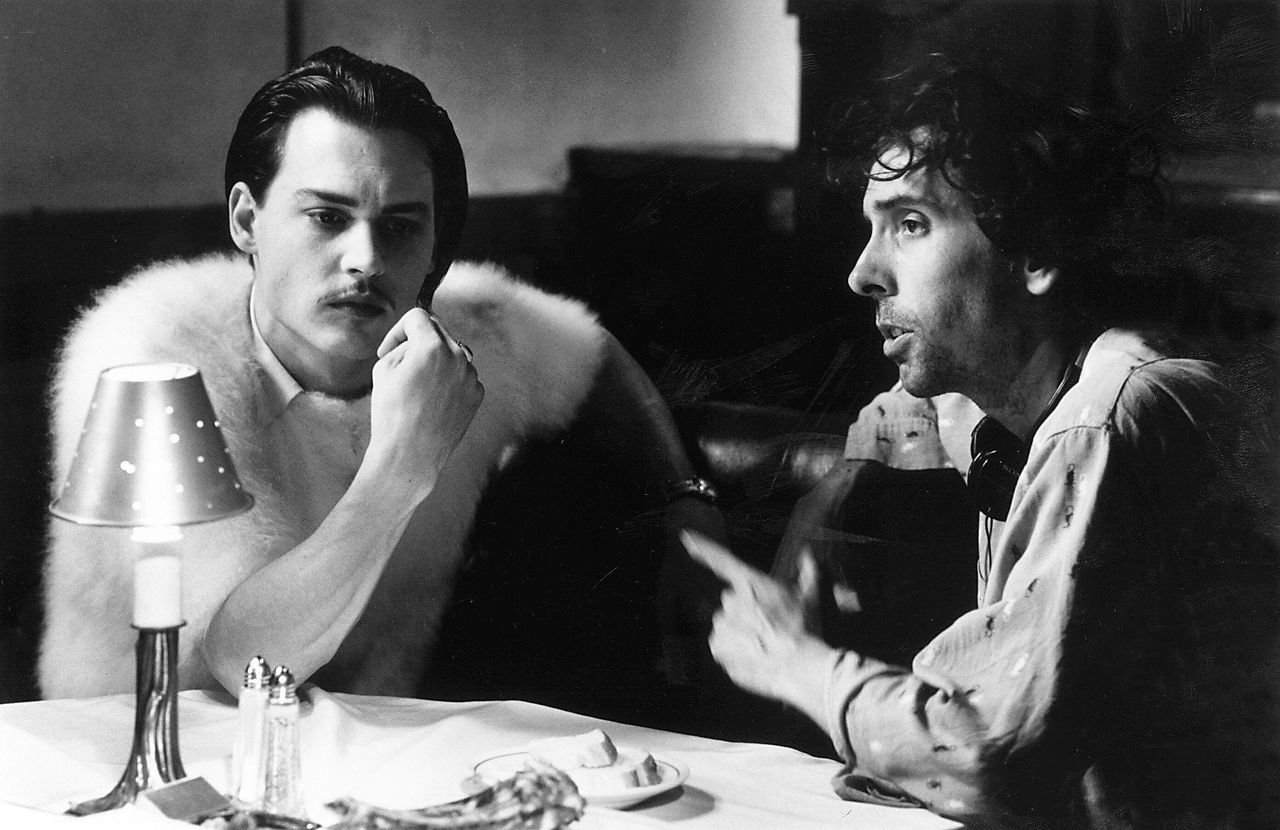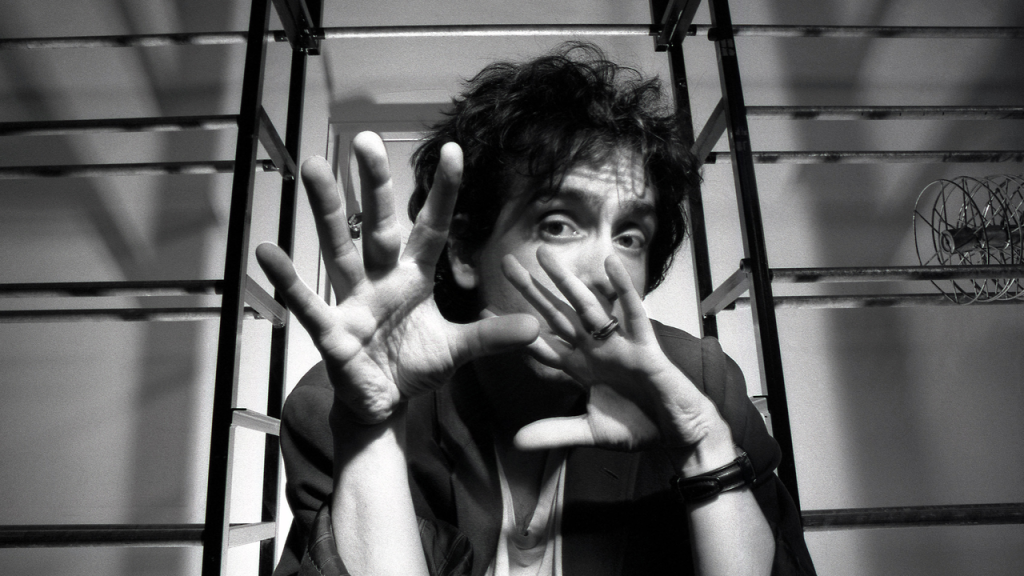Tim Burton is a director, by trade, but his true calling is an artist. A new four-part series invites us into the wonderfully weird and beautifully gothic world of this modern-age auteur. Tim Burton: Life in the Line takes us on a timeline journey through Burton’s filmography, offering a look at the man behind some of the greatest creations ever put to screen. Through conversations with many of his frequent collaborators, this documentary is a must-watch for all Burton fans. It is also a revealing account of artistic expression in a business that often capitulates to risk rather than to a creative signature.
The auteur theory holds that when a director’s influence and style permeate a film, the director is regarded as its author. Every film directed by Tim Burton, be it Batman Returns, Edward Scissorhands, or even Planet of the Apes, becomes more than a simple ‘directed by’ credit —it becomes a full-fledged, breathing Tim Burton movie. He imbues his own DNA into each of his projects to the point that these films are artistic expressions, rather than corporate IPs.
There are making movies and there are creating movies. Burton unquestionably is doing the latter on his projects. The terms seem interchangeable in movie-making, but making is not the same as creating them. Take a film like The Nightmare Before Christmas, which presents a fully realized world of inexplicable designs and formations. We may acknowledge the symbols and characteristics, but this is a wholly different world than what we’re used to seeing. Some directors come into a project and bring a script to life, but Burton is explicitly involved, whether in costume or set design.

Burton creates a world unlike our own and invites us into it as his guests. He is host, innovator, and maestro. He is making, and by doing so, he is working out his own form of expression, stemming from his youth, his insecurities, or his feeling of being an outsider. His trajectory as a filmmaker is that of an artist. In each project, he channels something he felt in childhood or adulthood.
One of his collaborators and interviewees in this project is beloved actor Christopher Walken, who makes an astute point about Burton as a filmmaker. “I had a dancing teacher who used to say to me, Chris, show me something I’ve never seen before – and that’s what Tim does every time.” Burton is far from a one-trick pony. He paints a canvas each time he makes a film, and it is a unique and wholly original one.
We see no tortured artist here, no one struggling to make a point. This is a story about someone who colors outside the lines. The most compelling part of this series is the interview, which features a roster of Burton collaborators and friends. Interviewees include Michael Keaton, his longtime producer and friend Denise Di Novi, Winona Ryder, his frequent muse Johnny Depp, and many more. This series looks at who Burton is as a filmmaker and, notably, as an artist, through the eyes of those who know him best.

Ultimately, this documentary is a wonderful treat for fans of Burton’s work. They will marvel at the behind-the-scenes trappings and callbacks to his movies. For even the casual fan, or merely the appreciator of filmmaking and artistic expression, this series is like a fun house experience. This is not about watching sausage-making but how ideas are born and realized.
We see early in the film a comparison between Burton and his creation, Edward Scissorhands. Of all the characters Burton has either worked on or created, Edward is the closest to him. In part, Edward is a form of self-expression. There is a unique symbolism in a man with scissors for hands who could not touch people, yet longed for connection. There is a fun-house quality to Edward. He draws people in, but there is also a tentativeness and a weird uncertainty that keep people at arm’s length. That is Tim Burton, through and through.

As part of this journey, we see the evolving world of Burton as an artistic outsider who reached tremendous heights of success. Through films like Alice in Wonderland and Sweeney Todd, Burton became something of an insider without ever losing his true identity. He retains that Burton-esque style, wholly his, making him one of the most compelling movie visionaries working today. Burton maintains a childlike innocence in creating, which is often discouraged as we age. He holds onto his imagination, dreams the wildest ideas, and makes them both realized and relatable.
Time and again, we see Tim Burton is a risk-taker in a business that shies away from risk. Look at any of his films. You can see this is not a director who plays it safe. There are so many films from Burton that could fall under this umbrella, but arguably the most famous example is Batman Returns. Look no further than a big-budget tentpole comic book film that is really a gothic arthouse experiment. While it fell to critical swords at the time, the film endures.
And why is that, especially in a sea of vast comic book films that have followed? The answer goes to Burton—an artist much like his characters. Misunderstood, perhaps a little weird, but a certified original. Burton is a celebrated filmmaker for a reason: he has a unique vision that belongs to him and him alone.
Tim Burton: Life in the Line is currently available to purchase independently on the series’ website here.

Through conversations with many of his frequent collaborators, this documentary is a must-watch for all Burton fans. It is also a revealing account of artistic expression in a business that often capitulates to risk rather than to a creative signature.
-
9
-
User Ratings (0 Votes)
0

Writing & podcasting, for the love of movies.
His Letterboxd Favorites: The Dark Knight, Halloween, Jaws & A Christmas Story.




![‘Jay Kelly’ Review – Noah Baumbach Makes A Case For The Magic Of Movie Stardom [NYFF 2025] ‘Jay Kelly’ Review – Noah Baumbach Makes A Case For The Magic Of Movie Stardom [NYFF 2025]](https://cdn.geekvibesnation.com/wp-media-folder-geek-vibes-nation/wp-content/uploads/2025/11/Jay-Kelly-JKELLY_20240523_15320_C2_R-300x180.jpg)

